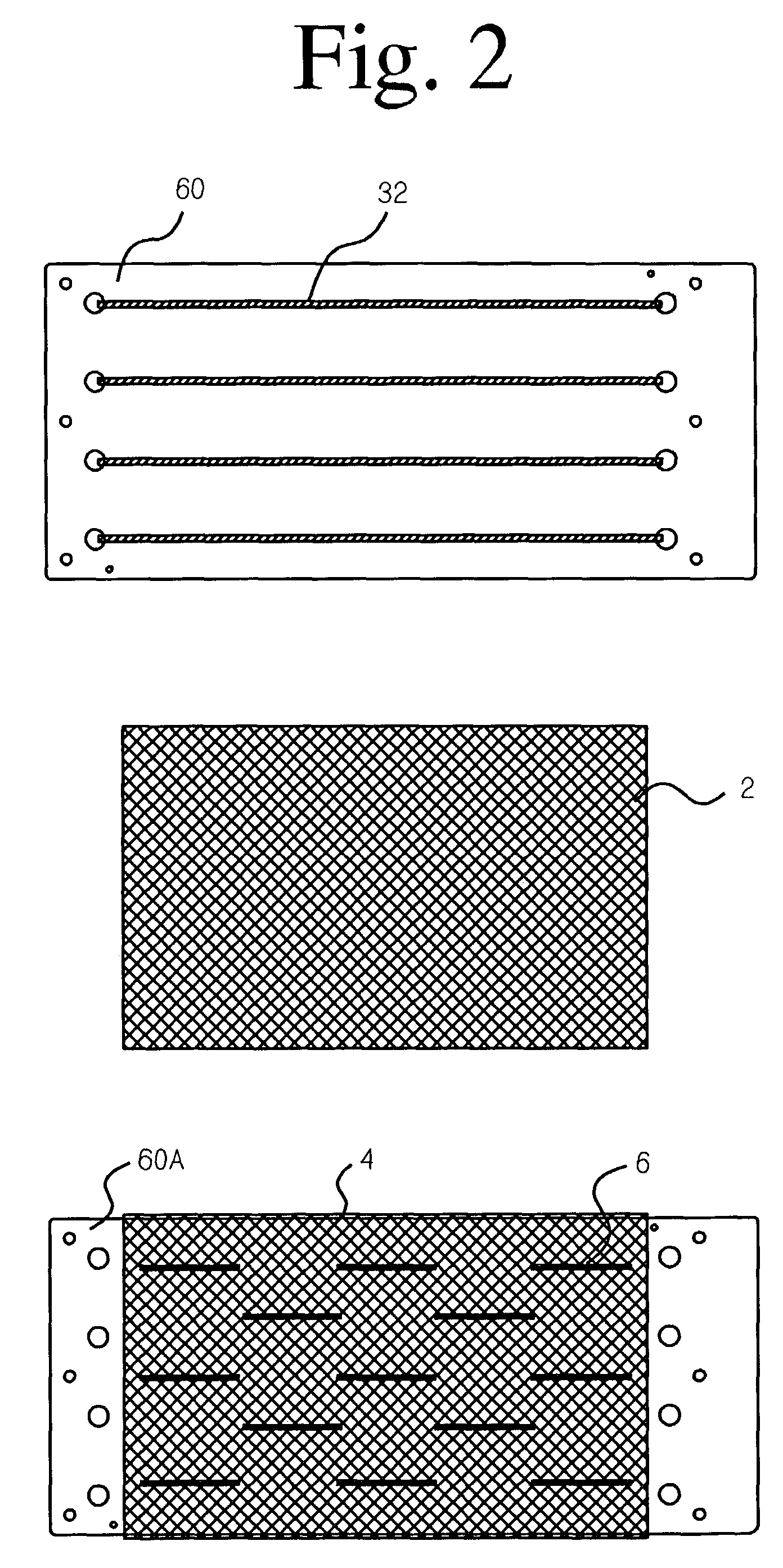Large surface area electrode and method to produce same
a surface area electrode and large electrode technology, applied in the field of large surface area electrodes, can solve the problems of poor slurry-type electrocatalytic coating application, preclude reprocessing and recoating spent electrodes, and metalurgically bonded fibrous electrode structures, so as to reduce fraying and pilling of tow, and eliminate the possibility of fire
- Summary
- Abstract
- Description
- Claims
- Application Information
AI Technical Summary
Benefits of technology
Problems solved by technology
Method used
Image
Examples
embodiment
Preferred Embodiment
[0036]In the preferred embodiment of the invention, the electrode is an anode made of titanium with an electrocatalytic coating applied. Preferably, an approximately 200 count tow of Ti-fibers with a nominal diameter of 18–25 micrometers is used. (The fibers do not have a circular cross-section, but the cross-sectional area of each fiber equals a circle of 18–25 μm diameter.) The fiber material is nominally pure Ti and preferably Ti-Gr.1, which has the best corrosion resistance. The substrate member is a rectangular plate made of Ti-sheet, 0.50 mm thick and preferably Ti-Gr.2, which is cheaper, harder and more readily available than Ti-Gr.1. (Ti-Gr.1 and Ti-Gr.2 are both nominally pure titanium, with a slightly larger level of impurity elements allowed in Ti-Gr.2.)
[0037]U.S. Pat. No. 6,589,405 describes a suitable coating sequence to produce an anode that can be used to purify water by generating hydroxyl free radicals. First, a “precoat” layer comprising iridium...
PUM
| Property | Measurement | Unit |
|---|---|---|
| thickness | aaaaa | aaaaa |
| porosity | aaaaa | aaaaa |
| porosity | aaaaa | aaaaa |
Abstract
Description
Claims
Application Information
 Login to View More
Login to View More - R&D
- Intellectual Property
- Life Sciences
- Materials
- Tech Scout
- Unparalleled Data Quality
- Higher Quality Content
- 60% Fewer Hallucinations
Browse by: Latest US Patents, China's latest patents, Technical Efficacy Thesaurus, Application Domain, Technology Topic, Popular Technical Reports.
© 2025 PatSnap. All rights reserved.Legal|Privacy policy|Modern Slavery Act Transparency Statement|Sitemap|About US| Contact US: help@patsnap.com



